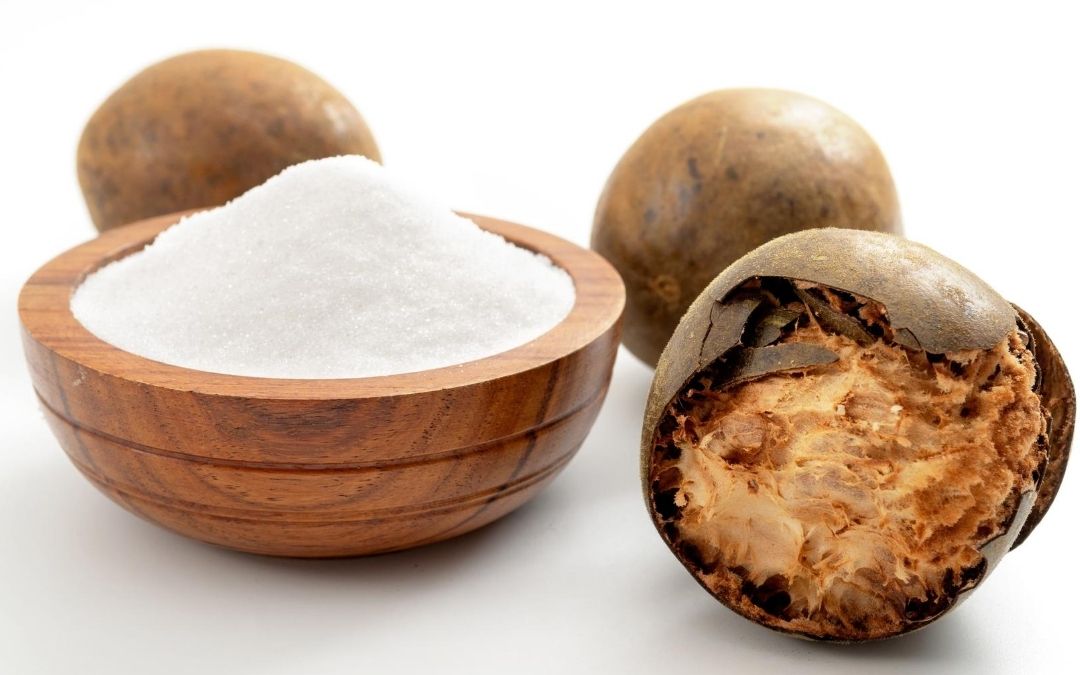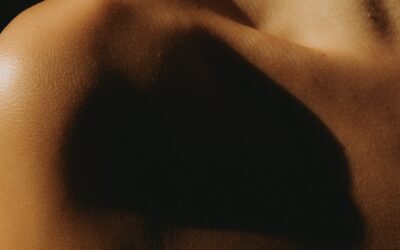I was talking with my daughter Tarnea the other day, she had something in her pantry that had thaumatin and monk fruit in it. I shared my research about thaumatin with her and she got mad at me. I decided not to go on with telling her about my monk fruit discovery…Eeek!
It got me thinking; If my daughter gets mad at me, then who else gets mad when I tell them what I have discovered about an ingredient?
I called her an hour later and apologised to her, saying she could make up her own mind about what she ate. After all, she has a degree in nutrition.
But this was the clincher. She said, “Mum, it’s less than 1% of the ingredients”.
This is when I knew that I’m not being clear about why I don’t use these ingredients, nor do I support any companies that use them, including the company that had made this food supplement in my daughter’s pantry.
It’s not about it being only 1% or less of the food product, it’s about what it’s doing to the health of our planet, humans, animals and future generations. It’s about how the additive is made and whether I’m willing to support biotechnology companies creating these products that may become something that is dangerous to the planet and human and animal existence.
The thing is, it’s an unknown – we are playing with species of plants, animals and microbes, using cross-species contamination with genetic manipulation and modification.
Now you may think I’m being a little dramatic, but when you have researched ingredients for as long as I have and you see how this process is done, how it is changing dramatically and the lies and deception of the chemical companies involved, then you may feel the same as me. The sad thing is that food and supplement producers who use these ingredients may be none the wiser. Let me explain
My friend Kim showed me a new product that was given to her by a new enthusiastic local food manufacturer. I call them manufacturers as they are not the farmer of this food, but rather they buy the ingredients from an outside source.
As I read the ingredient list I saw: Emulsifiers (sunflour lectin, soy lectin). Commonly emulsifiers are called ‘lecithin’. ‘Lectins’ are proteins in plants, they are not emulsifiers.
Also I’ve never heard of ‘sunflour lecithin’ or ‘sunflour lectin’, but rather ‘sunflower lecithin’. This demonstrates a complete ignorance of the ingredients that they have used to produce their food product.
This is just one example of the knowledge lacking in the food manufacturing process. I have consulted with companies (big and small) that had no idea how their ingredients were made. You see, food manufacturers do not make the ingredients, they source them from all over the world from chemical companies (if they are additives) and large food companies (if they are real foods).
And if they don’t understand agricultural practices and synthetic biology then these food companies may have their heart in the right place and be passionate about their product, but they may unwittingly be producing something that will make people sick over the long term. In other words, it will create chronic disease.
I’ve started consulting with companies and individuals who want to make a difference and ensure they are using foods that are ethical and have no long-term ramifications for our health or that of the planet. Perhaps the young enthusiastic local food manufacturers mentioned above should have contacted me first before creating thousands of labels with the wrong ingredient names and using dubious ingredients like vegetable oil and soy lecithin.
I have written an article called ‘A Synthetic Route to Natural’ which explains how biotechnology companies are using synthetic biology (various modes of genetic modification) in order to make food additives. I have also produced the documentary What’s With Wheat? that explores the modern agriculture principles that are stealing our health. (By the way, Tarnea came up with the title of that documentary). These sources will give you the information that most food producers are unaware of.
Thaumatin
So let’s talk now about thaumatin. I found out that thaumatin is made in various ways. The thaumatin that was on the ingredient list in my daughter’s pantry didn’t tell me where it came from or how it was made.
Thaumatin is used as a sweetening agent and/or a flavour modifier. One patent says that thaumatin is extracted from genetically modified barley which allows for the extraction of 2g of thaumatin from 1kg of barley.
Another patent says that thaumatin has a lingering after taste so in order to stop this they add flavouring agents (which could be up to 100 chemicals or could be made from a genetically modified micro-organism or extracted chemicals from a food).
Another way to modify the sweet thaumatin after taste is by mixing it with gymnemic acid, an anti-sweetening agent extracted from a leaf or made chemically. The natural leaf is used medicinally in Ayurvedic medicine. You then have to look up the patent of gymnemic acid in order to find how it is made chemically and the way it is extracted.
Gymnemic acids are glycosides of triterpene that suppress sweetness. They suppress the sweetness of most sweeteners, including intense artificial sweeteners such as aspartame and other sweeteners such as thaumatin, a sweet protein. The herb is traditionally used for the treatment of diabetes in India and gymnema extracts are sold in Japan for the control of obesity. It is thought that the gymnema extract reduces and/or blocks the activity of the sweet receptors on the tongue. So sugar water ends up tasting like water.
The synthetic biology industry also has a patent for thaumatin using a genetically modified yeast cell to produce it.
So there you have it. You really don’t know what you’re consuming when you see the word thaumatin in your ingredient list.
Monk Fruit
The next ingredient was monk fruit. Many monk fruits are 1% monk fruit and 99% erythritol. Johnson & Johnson, who marketed their monk fruit as Nectresse stating it was 100% natural but made from monk fruit with 99% erythritol, were sued for their false claims. Other claims from other brands (which include ‘pure fruit’, ‘fruit sweeteners’ and ‘monk fruit in the raw’) should also be scrutinised.
Recently I was at my favourite Sunshine Coast health food store Grub Organics when I saw a monk fruit product that said it was 100% dehydrated monk fruit juice. I purchased it as I was intrigued at what it would taste like. I opened the package, saw a fine white powder, plunged my finger into the pack and tasted a sickly artificial sweetener. So I did what any curious foodie would do, I called the company that had packed the product.
I asked the following questions:
What country is it from?
What is the patent of this product?
Is anything else added in the drying process like maltodexrose (which is often used in the drying of liquids like juices and broths)?
This particular food packing company is sizeable and I see them in many health food stores and grocery stores. I asked the question to customer care who then put me onto product procurement. I asked the questions again to the man in this department but he knew nothing. He even questioned if foods were patented.
Because the monk fruit I purchased was white and had an artificial taste about it, I decided the best thing to do with it was throw it out.
I also decided to look up the patent for 100% dehydrated monk fruit juice and found the following. The fruit is washed in a chlorine water solution, seeded, peeled and pulped, then the following happens in order: acidification, homgenisation, removal of flavour precursors, removal of volatiles and concentration, stabilisation. And then before the freeze-drying process they will add polydextrose or maltodextrose or sodium hydroxide.
No wonder the 100% dehydrated monk fruit juice I tasted was so artificial in flavour.
At Changing Habits, and no doubt other critically-thinking food companies, it sometimes takes us up to two years to find the right ingredients for our products. We question everything and if it doesn’t reach our standards then we keep looking. We have been doing this for the past decade, so we are getting really good at it. The process is getting easier as we know who we can trust in a world where food and additives are a big secret (with millions of patents that the user usually knows nothing about).
At Changing Habits we are influencing how our food is produced, classified and marketed and we are the ethical and trusted authority in the whole food market. As we learn, we teach and I can tell you that every day I learn something new.
Cyndi O’Meara








Hi Cyndi, soooooo glad I found you! Just started following you on U tube & fb & checked out your website. I look forward to learning more from your experience & knowledge. Kindest regards, Karen 💕☺️
Thank you Karen! We’re glad you have found us too and look forward to inspiring your real food journey! Kerry 🙂
loved this article!
Thanks Janien!
Hi Cyndi,
Thank you for putting the article together. I grew up in nigeria and the fruit now call “thaumatin” is something I have memories of enjoying as a child – It was called something else and I only just learned about it being called “thaumatin”. Am not completely sure where you stand so I wanted to ask some questions to clarify – are you saying that thaumatin is completely bad all together or the way it has been processed and disintegrated is where you have the problem ?
I remember the fruit being used by us kids as a sweetener – we would suck on the seed for a few minutes and for the next few hours after that, anything you eat or drink had a very sweet taste. Let’s just say I actually enjoyed drinking water because it tasted like juice. But our elders had completely different uses for it, from diabetes to what we called insanity back in the day.
If you could, please share the source of your research as well. Thank you again.
Hello Jenny, Thaumatin in its natural state is perfect. It is the protein in thaumatin that gives it that sweet taste, it also moderates flavours. That I do not have a problem with, but I do have a problem with the extraction, how it is done, what is added and how it is being used and or the synthetic biology that may be used in order to replicate this compound.
Thank you so much for your beautiful memories of this natural fruit, it warms my heart.
Thanks for this great article. I was wondering, if the monk fruit product had been certified organic the manufacturing process wouldn’t include all those chemicals would it?
Hi there, even if it is certified organic they will still need to use some chemical processing albeit different to the one Cyndi described. Certified organic monk fruit 1% monk fruit and 99% eythritol. Ranger monk fruit is at least 100% monk fruit.
Here are some examples: https://s3.images-iherb.com/now/now07124/l/1.jpg & https://www.healthrangerstore.com/collections/monk-fruit-low-carb-sugar-substitute/products/organic-monk-fruit-extract-powder-low-carb-sugar-substitute-0-7oz-20g
What are your thoughts on the following monk fruit? It does have 11% alcohol in it, but no erythritol!
https://es.iherb.com/pr/now-foods-real-food-organic-monk-fruit-liquid-sweetener-2-fl-oz-59-ml/81244?gad_source=1&gclid=CjwKCAiAh6y9BhBREiwApBLHC-uyA67dqhba72NbgQJZYtrak7WW_K8w0N8G85jcz2TqgG3GCjPerBoC134QAvD_BwE&gclsrc=aw.ds
Hi Nicole,
Thank you for reaching out. Here is the patent on the extract https://portal.unifiedpatents.com/patents/patent/WO-2022264600-A1
It looks good! The only other ingredients are water and 11% alcohol.
It’s the best one we have seen so far 🙂
Hi Cyndi,
I’m curious about your patent sources – one that you use to discuss the production of Thaumatin appears to have been abandoned, even at the time of this article being published, which I understand means that it isn’t actually in production using this method.
Have you looked into Precision Fermentation process? This appears to be the latest development in how proteins are being developed. Here is an example of one company making Thaumatin this way.
https://conagen.com/press-item/conagen-produces-two-thaumatin-protein-natural-sweeteners-at-scale/
And another of a company making milk this way too:
https://www.edenbrew.com.au/
Thank you for your question on Thaumatin.
There were several patents that I talked about in order to make Thaumatin and of course things are abandoned as they find better ways to make the product.. One I talked about in the article was precision fermentation, which is also called synthetic biology which is also called biotechnology. Precision fermentation means that they have genetically modified a microbe to achieve a metabolite like thaumatin as the outcome.
The problem with this precision fermentation is the ethics and vulnerability of ecosystems if these microbes escape into the environment.
The CSIRO in Australia have said that this is a dilemma but assures me that the GM microbes that would be a problem to humans and the environment are usually in closed vats, whereas some GM microbes are being released into the environment in farming practices.
I know about the company Conagen, I’ve written about them and their patent on GM microbes making the glycoside stevia, I believe it’s called bestevia and Cargills GM microbe stevia is called eversweet.
Conagen is making two Thaumatin peptides no doubt with different GM microbes and perhaps differing substrates.
Insulin for humans with diabetes is made using Synthetic Biology, this is lifesaving, but I’m opposed to the rampant genetic modification of microbes for everything from food additives, to sweeteners, supplements to name a few, one mistake and we could destroy ecosystems. But then that’s my opinion.
I would have loved the article to have been helpful in pointing us to an acceptable no carb sweetener. Please suggest some.
Hi there, 100% pure Stevia Liquid is a highly recommended sweetener option, as it comes directly from the stevia plant with no additives or questionable ingredients. However, caution is advised when it comes to stevia powder, which is often heavily processed and not the best choice.
Hello
How do you find out who the food packing company is of a particular product?
Thanks
Hi Liz, you should be able to contact the brand directly and ask for the details.